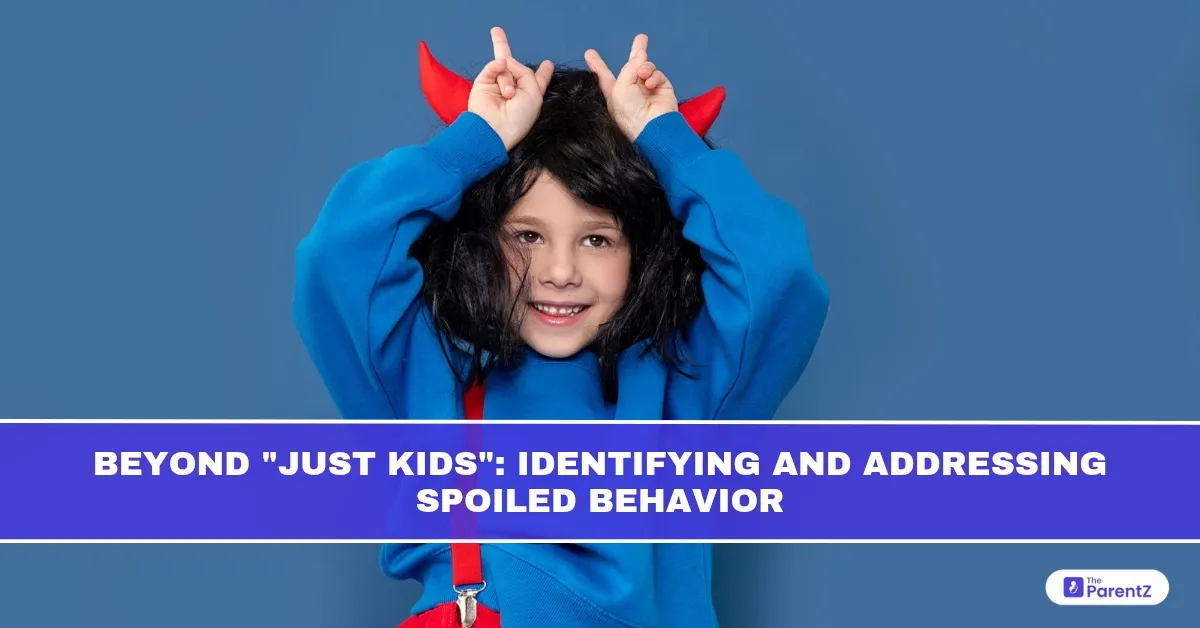Picture this: You're exhausted after a long day, trying to grab a few groceries before heading home. Suddenly, your child spots a toy, and the negotiations begin. When you say no, the tears start flowing—loudly. As other shoppers glance your way, that dreaded thought creeps in: "Is my child becoming spoiled?"
If you've ever worried about this, you're not alone. The term "spoiled" gets tossed around a lot, but it rarely helps us understand what's really happening or how to address it.
In this blog, we'll explore the real differences between normal childhood behavior and concerning patterns, see things from both parent and child perspectives, and discover practical strategies that actually work, without the guilt trips or judgment. Because the truth is, none of us wakes up planning to raise entitled children, and almost all of us are doing the best we can with the tools we have.
Normal Child Behavior vs "Spoiled" Behavior
First things first: kids are kids. They're learning, growing, and figuring out this complicated world. A lot of what we might initially label as "spoiled" is actually just normal developmental behavior:
Normal child behavior includes:
- Testing boundaries (that's literally their job!)
- Expressing emotions dramatically (they're still learning emotional regulation)
- Wanting things they see (they haven't mastered impulse control)
- Being occasionally self-centered (perspective-taking develops gradually)
Signs that might indicate problematic patterns include:
- Consistently demanding rather than asking
- Inability to handle "no" even after explanation
- Showing little gratitude or appreciation
- Regular disrespect of rules and boundaries
- Difficulty sharing or considering others' needs
The key difference? Frequency, intensity, and adaptability. Every child will have tough moments, but when challenging behaviors become the default response and don't improve with guidance, it's time to pay attention.
How Did We Get Here? Understanding Both Sides
The Parent Perspective
Parenting is hard! Many factors can contribute to behavioral issues:
- Time pressure: When we're rushing between work and activities, sometimes giving in feels easier than teaching a lesson.
- Guilt: Especially for working parents or after divorce, compensating with material things or lax rules is common.
- Avoiding conflict: Nobody wants to deal with a tantrum in public.
- Inconsistency: When we set rules but don't follow through, we unintentionally teach kids that persistence pays off.
- Desire to provide: We want our kids to have what we didn't have growing up.
The Child Perspective
From your child's view:
- They aren't trying to manipulate—they're trying to meet needs and wants in the only ways they know how.
- They're learning cause and effect (if I cry, I get what I want).
- Their brain is still developing impulse control and emotional regulation.
- They don't understand delayed gratification or resource limitations.
- They're naturally egocentric during certain developmental stages.
Recognizing the Warning Signs
Here are some situations where parents might start noticing concerning patterns:
- The "I Want" Soundtrack: When requests come without please or thank you, or demands replace questions.
- The Negotiator: Rules become starting points for debate rather than expectations to follow.
- The Bailout Cycle: When you find yourself constantly rescuing your child from consequences.
- The Gratitude Gap: New possessions bring fleeting joy, followed by requests for more.
- The Empathy Void: Difficulty recognizing or caring about others' feelings.
- The Responsibility Dodge: Basic age-appropriate tasks meet with significant resistance.
Addressing the Issues Without Making Things Worse
Start With Prevention
- Set clear, consistent boundaries: Kids actually feel safer when they know what the limits are.
- Focus on values, not things: Make meaningful experiences and relationships the currency of your family life.
- Model gratitude: Verbalize your own appreciation for both big and small things.
- Teach delayed gratification: "We'll consider that for your birthday" or "Let's put that on your wish list."
- Create opportunities to give: Involve kids in selecting donations or helping others.
When Issues Arise
- Stay calm: Your emotional regulation helps them learn to manage their own feelings.
- Validate feelings while holding boundaries: "I understand you really want that toy. It's hard to wait. But we're not buying it today."
- Offer limited choices: This gives them some control while keeping within your boundaries.
- Use natural consequences: "If you don't put your bike away, it might get rained on."
- Focus on solutions: "What could you do differently next time?"
- Notice and praise positive behavior: "I noticed how you shared with your sister. That was kind and generous!"
When Situations Escalate
Sometimes, despite our best efforts, situations get worse before they get better:
- Expect an extinction burst: When you change patterns, behaviors often intensify before improving (this is actually a sign your approach is working!)
- Have a calm-down plan: Establish a quiet space or routine for both you and your child to reset.
- Choose your battles: Some issues need addressing immediately; others can wait.
- Remember it's a marathon, not a sprint: Behavioral change takes time and consistency.
- Get support: Talk with other parents, join a parenting group, or consult a family therapist if needed.
- Take care of yourself: You can't pour from an empty cup.
Conclusion
If you're reading this, you care about raising kind, responsible children. That intention matters a lot. We all make mistakes and have days when we're not the parents we want to be. Children are resilient, and it's never too late to make positive changes.
Remember: The goal isn't perfect behavior—it's raising humans who understand boundaries, feel grateful, consider others, and can cope with disappointment. These skills take years to develop, with plenty of missteps along the way.








Be the first one to comment on this story.